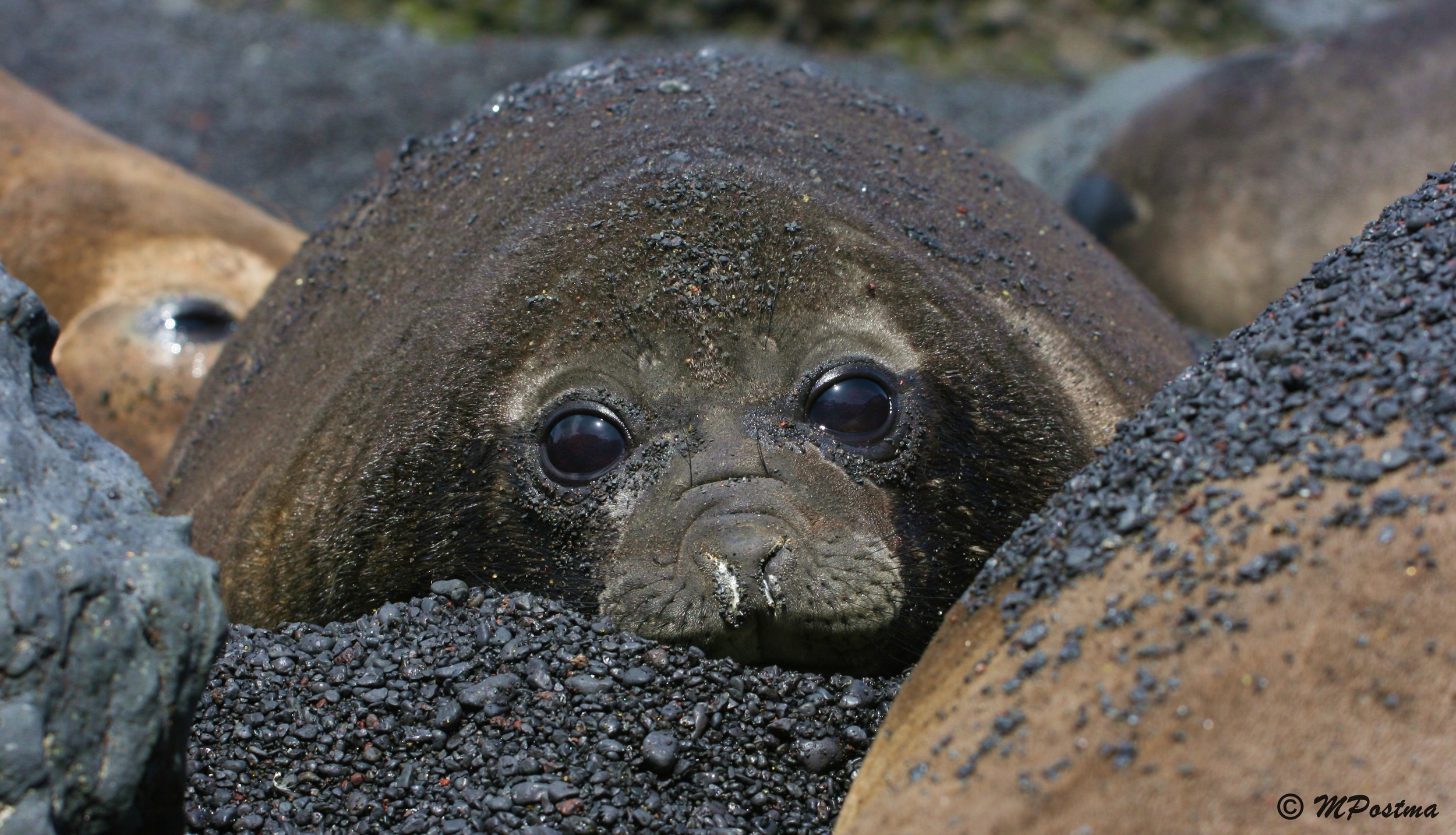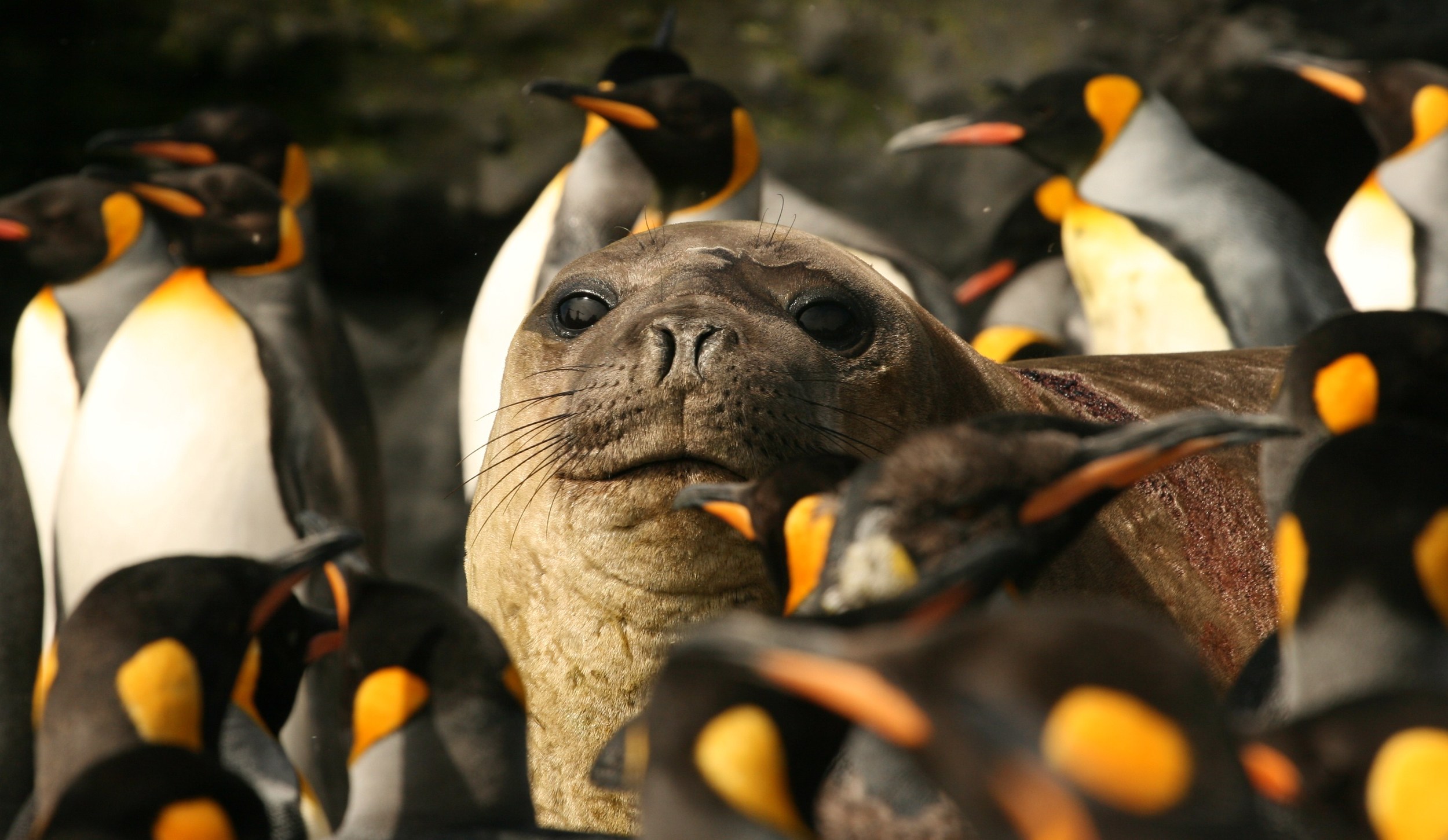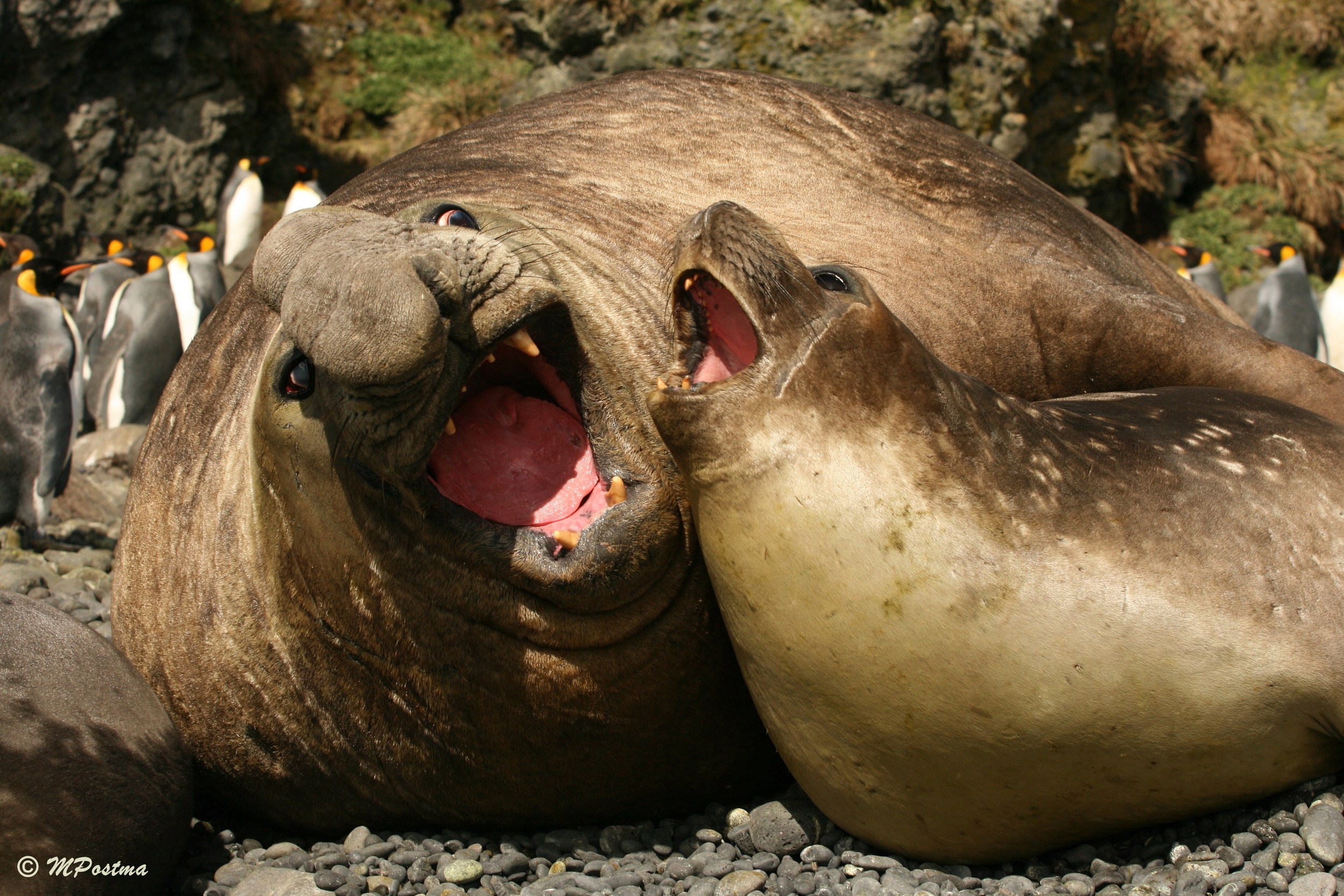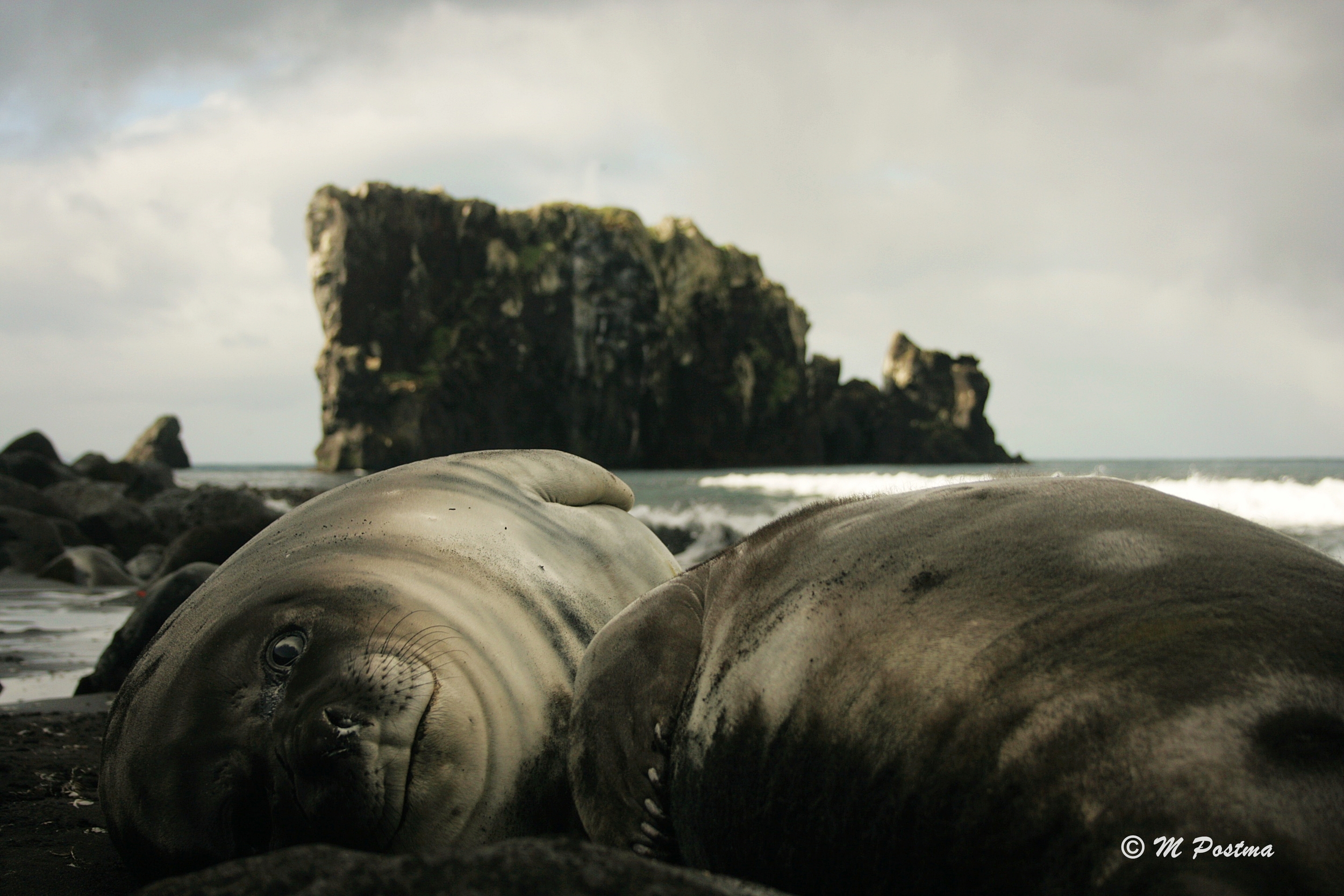The Southern Elephant Seal
Southern elephant seals (Mirounga leonina) are the largest living seal species. They are among the world’s most sexually dimorphic mammals, with adult males tipping the scales at between 3 000 and 4 000 kilograms – up to 10 times the weight of an average adult female. They are distributed in the Southern Ocean region between 35 and 70 degrees south and ‘haul out’ two, or even three, times per year onto sub-Antarctic islands and mainland sites on the coasts of Argentina and Antarctica to breed, moult and winter.
Southern elephant seal research activities at Marion Island
In recent years, our research has focussed on the demographic aspects of Marion Island’s seal colony, with particular emphasis on changing population sizes and the factors contributing to those changes. Since 1951, the Marion Island elephant seal population had declined by 83 per cent, with the population falling most sharply (by 5.8 per cent per year) between 1986 and around 1994. It was with this in mind that a structured research programme was set in place to identify changes in the long-term trends of top predators and identify plausible reasons for those changes, we can use the findings to anticipate the potential impacts of a changing environment on us – and vica versa.
Long-term mark-recapture program
Since 1983 almost all southern elephant seal pups born on Marion were double tagged in their hind flippers with a uniquely numbered, color-coded Dalton tag. Since 1983, southern elephant seals were checked for the presence of tags on all popular beaches along the coastline every 7 days during the breeding season (mid-August to mid-November) and every 10 days for the remainder of the year. Tagged individuals were documented (tag number and cohort specific color; sex if known; haul-out site) to compile life history data for each individual. The long-term mark-recapture program is the backbone of our elephant seal research and has delivered a considerable amount of knowledge and some startling new discoveries about the species.
Satellite tracking
Southern elephant seals spend up to 70% of their annual cycles at sea. Most of this time is dedicated to gathering energy for the demanding breeding and moulting events. Adult elephant seals have two distinct terrestrial phases which are characterised by prolonged fasting. Whilst the breeding and moulting periods of their life cycles are intensively studied, little is known about their time at sea.
Elephant seals at Marion Island have been fitted with satellite relay data loggers since 1999 to present. Currently more than 150 individuals have been tracked giving insights to their movement patterns at sea and variations in behaviour as a possible response to foraging. Our tracking efforts are shared in an unprecedented international collaboration, namely the Marine Mammals Exploring the Oceans Pole to Pole (MEOP) effort - global data available here.
Body mass assessment through photogrammetry
Biologists are interested in changes in size and weight of other creatures on our planet. It allows for deciphering of trends in population processes, and can be used as indicators of ecosystem changes, such as food availability. Body mass plays a fundamental role in the life of southern elephant seals, often influencing survival and reproduction. However, weighing adult southern elephant seals can prove to be challenging due to their large size (males 1500kg – 4000kg, females 300kg - 800kg). However with the use of progressive technology we are able to weigh these animals with the help of photogrammetry, the science of making measurements from photographs. A simple accurate method was developed by P.J.N de Bruyn in 2009. Since the development, this sampling method was integrated into the annual work plan and thousands of elephant seals have been photogrammetrically weighed with minimal disturbance to the animal. By weighing individuals over time we are able to assess survival and reproductive parameters of southern elephant seals at Marion Island.
Weaner weighing
In spring, adult females haul-out on Sub-Antarctic Marion to pup and suckle their young. This breeding period last for approximately 30 days in which the females suckle their pups for approximately 22–23 days. During the suckling period pups can grow almost three-fold in size before weaning. To assess their mass at weaning we have physically weighed pups born from tagged mothers between Ships cove and Archway beach since 1998. Pups are weighed to the nearest 0.5 kg with a calibrated Salter 200-kg scale, using a weighing net and lifting pole. Pup weaning plays a fundamental role in pup survival, with heavier pup usually surviving better.
Mother-pup identification
To keep track of mother–pup pairs throughout the breeding season, pups of known mothers are tagged with temporary Supersmall_tags in the inner inter-digital webbing of the right hind flipper while still suckling on their mother. At weaning, these temporary tags are replaced by long-lasting Dalton Jumbo_ tags to identify individuals for the duration of their life.
Diet assessment through isotopic analysis
Despite the rigorous demographic data that exists for southern elephant seals from Marion Island, the trophic ecology of this population (i.e. the prey consumed and trophic level occupied) remains unknown. Stable isotope (SI) analysis provides a powerful indirect method to assess the trophic ecology and the foraging habitat utilized by marine mammals with cryptic life-history stages. This method is based on the principle “you are what you eat”, whereby the biomolecule composition of the predator reflects the SI composition of the prey in a predictable manner. In addition, the SI signature captured along the length of keratinous tissue such as e.g., vibrissae/whiskers are biologically inert after biomolecule deposition, and if sampled sequentially along the length of the vibrissae allows a unique, temporally integrated assessment of the individual’s trophic ecology. Our aim is to one day combine the temporally integrated SI data obtained from the vibrissae with satellite telemetry data in order to effectively use southern elephant seals as marine sampling platforms and to support ongoing biomonitoring efforts in and around the Southern Ocean.

















